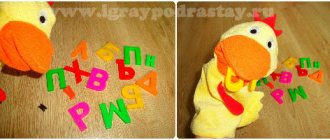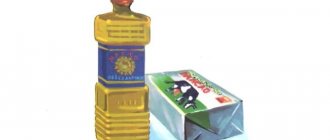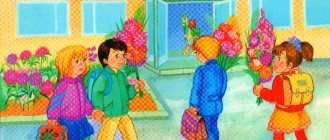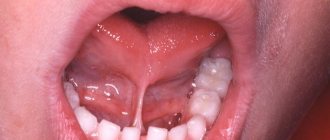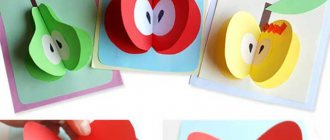Introducing a child to the Russian alphabet is always an encounter with an unknown but mysterious world, in which there are so many interesting things.
The letters of the Russian alphabet make up a whole family, with 33 inhabitants!
And everyone needs to be remembered in their places. But the study of letters does not end there. We also have to divide them into vowels and consonants, stressed and unstressed, soft and hard, voiceless and voiced . And this is still far from a complete classification. Let's figure out how to correctly divide the letters of the alphabet into groups.
Songs to learn the alphabet - video
Songs help you learn the alphabet and remember letters faster and easier. To a cheerful, simple melody, the characters sing about the letters, arranged in the same order as in the alphabet. Get your child interested in the video and offer several options to choose from. Let the child choose the song himself.
If the child is attentive and not only listens, but also watches the video series, choose a song with bright pictures and memorable characters.
your child often get distracted while watching ? A song with only lyrics is enough.
Tip : You can listen and watch videos every day in the first half of the day, when information is perceived easier and faster.
Positions in words of vowel letters making 2 sounds
The positions of vowel letters producing two sounds require certain conditions to be met. We reviewed them above.
To make it easier to remember the rule, you can use the notation table.
| Yotated vowels E, Ë, Yu, I give 2 sounds if they stand: | ||
| at the beginning of a word | after a vowel | after the disjunctive b or b sign |
| anchor | snake | courier detour |
Exercises to strengthen and develop the speech apparatus
Often, a child pronounces sounds incorrectly because his speech apparatus muscles are poorly developed. Speech therapists offer exercises aimed at strengthening this muscle group. You need to start doing them from the age of 3-4 , so that by the age of 6-7 the child does not have any problems with speech.
- Exercises to strengthen the muscles of the tongue help pronounce the letters “c”, “ch”, “t”, “r”, “sh”, “zh”.
- “Sting” - tense your tongue as much as possible, stick it out and stay in this position for as long as possible.
- “Spatula” - place the tongue on the lower lip.
- “Bowl” - open your mouth, stick out your tongue, do not touch your teeth, stick it back.
- “Pendulum” - open your mouth, stick out your tongue, tense, and move left and right.
- “Horse” , “turkey” - the baby should imitate the clatter of hooves, as well as the cry of a turkey (bl-bl-bl).
- Exercises to strengthen the root of the tongue help to correctly pronounce the sounds “g”, “k”, “x”.
- slight cough;
- imitation of sounds when gargling;
- pronunciation of the vowels “a”, “i”, “e”, but sharply, abruptly.
- Correct closing of the lips helps to pronounce the sounds “b”, “m”, “p”.
- Squeeze the pencil between your lips and describe a circle in the air with it.
- Squeeze a bean or seed with your lips and then sharply spit it out.
- Show how a horse snorts.
- Imitation of drum sounds - boom, bam.
- Cheek training.
- Take turns puffing out your cheeks.
- Puff out your cheeks and imitate chewing food.
- Roll air from one cheek to another.
Fine motor skills help in speech development. Massage your baby's palms regularly. You can use soft brushes, balls, and say jokes for this. Applications, stringing of beads, modeling from plasticine or salt dough are great for developing fine motor skills.
Consonants
Next, we will explain the concept of “consonant sounds”. It can be converted into a phrase that has a similar sound and spelling - “with vowel sounds.” That is, they stand next to vowel sounds and are their neighbors. Consonant sounds are formed by combining voice and noise. In this case, the tongue, teeth or lips interfere with the air flow.
Consonant sounds are divided into voiceless and voiced.
- Voiced sounds include sounds consisting of noise and voice: [b], [c], [g], [d], [g], [z] and their soft variants. This group also includes sonorant sounds, in which the voice always predominates, the noise is minimal: [l], [m], [n], [r] and their soft variants.
- Unvoiced sounds include [k], [p], [s], [t], [f], [x], [ts], [sh], and their soft variants. This group also includes [h'] and [h'], which do not have a solid pair.
How to learn the alphabet online - 5 proven simulators
When a baby learns the alphabet with a tablet in his hands, the information is remembered more easily, because the child is completely focused on the bright picture. We have selected for you several interesting applications that can be downloaded to your tablet and offered to your child as an alternative to books and posters.
Talking ABC - Alphabet
The application has free and paid content, the tasks are all clear and accessible. In addition, the exercises differ in difficulty level. The kid will be able not only to learn the letter, but also to color it. The application is free, but you can also purchase the full version.
ABC for children
The child learns all the letters of the alphabet from bright pictures. The application interface is simple, accessible, and has sound. Learning occurs not only through pictures, but also through riddles. The application is free.
«Alphabet. Let's learn letters. «
This application is suitable even for the little ones. Especially if your child loves dinosaurs. You can study together with your child - you on the phone, for example, he on the tablet.
ABC coloring book
A real find for children who love to draw. In this application, the baby learns letters, gets acquainted with their writing and shows his creative abilities. An excellent educational game for those who are getting acquainted with the alphabet and are already learning to read. The application is free.
Letters: learning to read is fun
First, the child learns the interactive alphabet, and then can play with the letters. To do this, he needs not only to name the letter, but also to pronounce the sound, and then name the object whose name begins with this letter. The short version of the application is free, the full version is paid.
Cartoons on the topic
To help your child quickly learn the division of letters into vowels and consonants, you can offer him cartoons on this topic. On our website you will find educational cartoons dedicated to this topic.
Speech therapist. Russian alphabet
This video presents sounds in the Russian language using examples of onomatopoeia. This technique will allow children to practice the clarity of pronunciation of vowels and consonants, and to more clearly feel the difference in their sound. Sounds accompany bright pictures with animals and natural phenomena. You can watch the cartoon here
Learn and sing the Russian alphabet
This video contains a performance of the alphabet to music. The melody is pleasant, easy to remember, and the song itself is accompanied by a display of the letter and form of its writing. This cartoon can be useful for children of any age, as it is aimed not only at remembering the order of letters, but also at practicing diction. You can watch the cartoon here
Voiceless consonants
There is a generally accepted opinion that it is impossible to sing consonants. However, the authors of this cartoon break the usual stereotypes of perception. Of course, this video cannot be called a song in its entirety: rather, we will be dealing with a drawn-out pronunciation of voiceless consonants. This is extremely useful for children's diction, in which defects in the pronunciation of hissing sounds are constantly visible. Play this cartoon for your child more often so that he corrects his diction. You can watch the cartoon here
Talking ABC - poster for learning the alphabet at home
We have prepared for you a review of the most interesting and fascinating alphabet posters. Choose a poster where a voice pronounces the letter and sound. It is important that the child understands the difference between them. Be patient, support the child in everything, help him.
- Talking ABC Expert. This poster contains letters, poems, songs, and the voiceover is clear and understandable.
- ABC. Farm and zoo. Here the child will find fairy tales, letters, numbers, geometric shapes, animal names. The poster is bright, engaging, and the sound is clear and loud.
- Poster Pushkin and Russia. ABC. The canvas depicts characters from the works of Alexander Sergeevich Pushkin, they read poetry, professional voice acting is used. The buttons respond well to pressing and have an auto-off function.
- Safety poster. Azbukvarik . – the poster introduces children not only to letters and sounds, but also to the rules of the road. Very colorful, useful and durable.
- ABC of child safety. Connoisseur. The poster teaches useful and necessary things in life - politeness, correct behavior and, of course, the alphabet. There is a knowledge test function and musical accompaniment.
How to teach the alphabet in 1st grade
Children begin to learn letters in kindergarten, so in first grade the material is consolidated. Letters are taught not as they are located in the alphabet, but taking into account the phonetic features of letters and sounds.
- Lessons begin with the study of vowels: A, U, O, E, I, Y.
- The next topic is devoted to sonorant consonants - M, L, R, N, as well as the letter Y.
- Then they study consonant letters that form pairs - hard-soft, voiced-voiceless: G-K, D-T, B-P, Z-S, V-F.
- Then they learn the vowels that sound after the soft sign and consist of two letters: E, Yo, Yu, Ya and the soft sign.
- The turn of hissing consonants comes: X, Ch, Shch, Ts and the dividing solid sign .
There is no single methodology for learning letters in 1st grade. The sequence varies depending on the program in which the class is taught, as well as the methodology approved at the school. There are teachers who have developed their own methodology. The standard order for learning letters is as follows:
- Vowels that sound unambiguous;
- Simple consonants;
- Paired consonants;
- Complex letters.
Vowel sounds and letters
In every word, the most sonorous sounds are the vowels. Their education uses voice. When pronouncing vowel sounds, a stream of air flows freely from the mouth as you exhale.
Definition
Vowel sounds are speech sounds that consist only of the voice.
If you change the shape of your lips, you can distinguish vowel sounds. The sound [o] is formed by rounded lips, for example in the word “cat”. If you stretch out your lips with a tube, you get the sound [u] in the word “friend.” If we stretch our lips in a smile, we will hear the sound [i] in the word “feast.”
There are six main vowel sounds in the Russian language:
[a], [o], [y], [i], [s], [e]
In a word, vowel sounds form a syllable alone or together with consonants:
- Name
- flour
- beard
- orphan
These sounds can be written down on paper with the corresponding letters:
a, o, y, and, s, e
In addition to them, in writing the softness of the previous consonant is indicated by the vowels “e”, “e”, “yu”, “ya”:
- body
- grater
- Luke
- strap
These letters denote double sounds consisting of a consonant [th'] and a corresponding vowel [a], [o], [u], [e].
Conclusion
The Russian language has six vowel sounds and ten vowel letters: a, o, u, i, ы, e, e, e, yu, i
Vowel letters can be written in pairs:
- and I
- oh
- y-y
- e-e
With their help, words are distinguished:
- glad - row
- languid - dark
- bow - hatch
Let's remember that we hear sounds, but we write letters.
